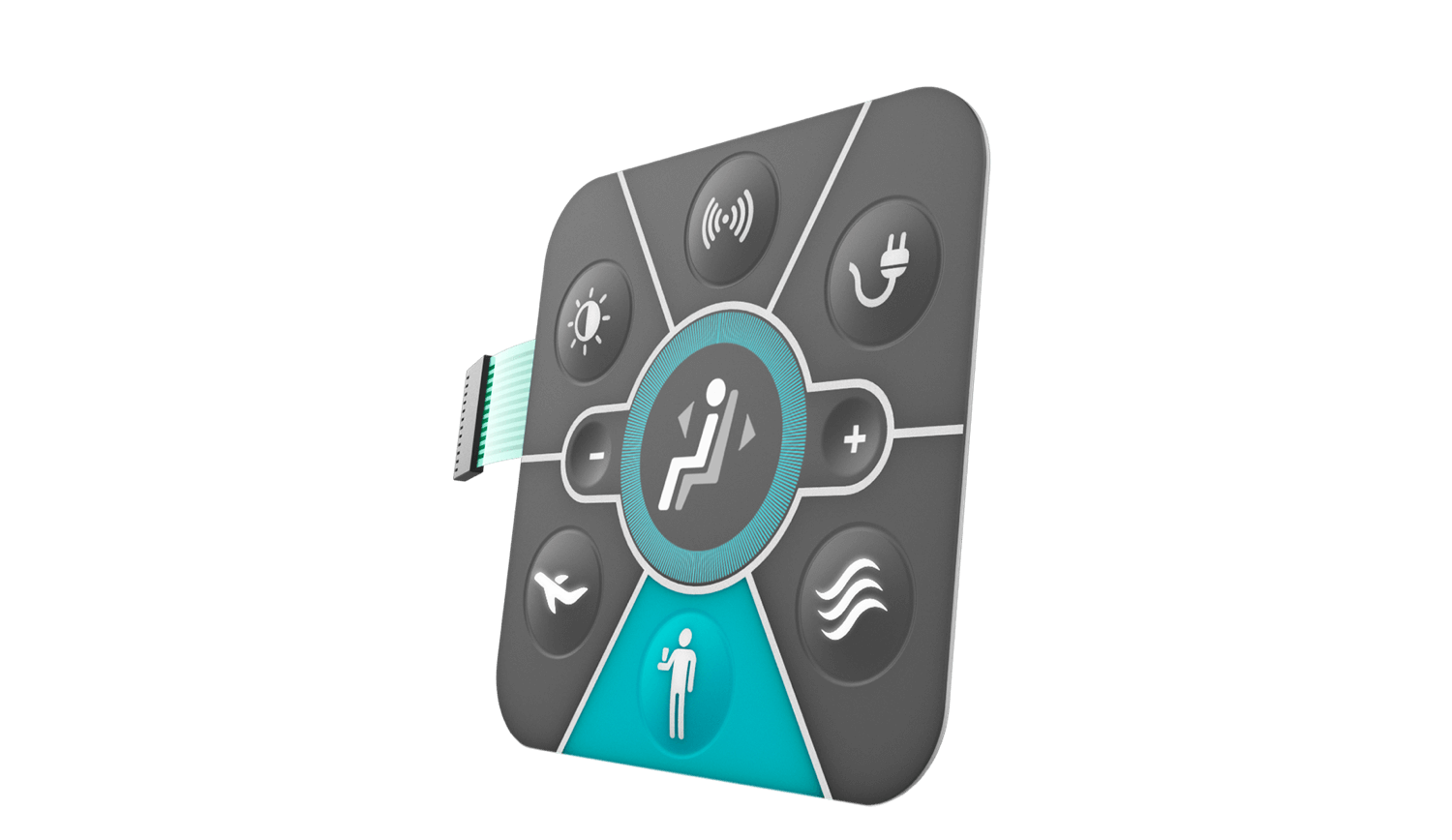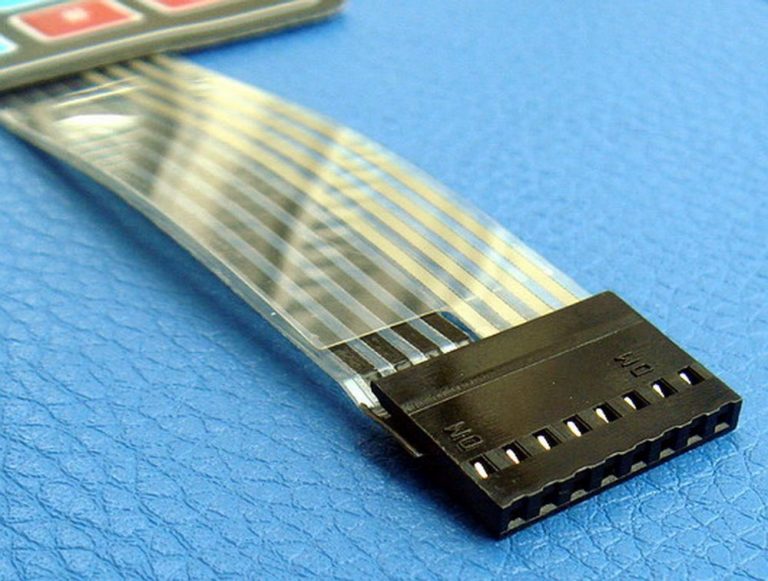The Impact of Membrane Switches on User Interface and Device Functionality
The Impact of Membrane Switches on User Interface and Device Functionality
Blog Article
Comprehending Membrane Layer Switches Over: The Trick to Long Lasting and Trusted Controls
Membrane layer switches stand for a critical facet of contemporary user interface style, blending capability with resilience in different applications. As we discover the details of membrane layer buttons, it ends up being clear that their function in boosting control systems is both intricate and profound, elevating questions concerning exactly how best to leverage their abilities in future developments.
What Are Membrane Layer Buttons?
Membrane buttons are an advanced option in the world of customer interface innovation, incorporating performance and style effortlessly. These tools serve as an interface in between individuals and digital systems, integrating several components into a compact layout. Normally constructed from adaptable, thin layers of products, membrane buttons are developed to reply to touch, enabling individuals to engage with equipment and electronic tools successfully.
The key components of a membrane switch consist of a published circuit layer, graphic overlay, and a spacer layer that prevents unplanned activation. The visuals overlay can be tailored to show brand identity or individual preferences, improving visual appeals while ensuring functionality. Membrane switches are typically used in various applications, consisting of clinical devices, consumer electronics, and industrial devices, owing to their toughness and resistance to ecological elements such as wetness and dirt.
One of the essential advantages of membrane layer switches is their capability to withstand damage, making them perfect for high-traffic environments. Furthermore, they are light-weight and need minimal room, enabling innovative styles in product development. In general, membrane layer switches stand for a reliable and practical choice for modern-day digital user interfaces, weding innovation with user-centric style concepts.

Exactly How Membrane Changes Job
The procedure of membrane switches over joints on a simple yet reliable mechanism that translates customer input into digital signals. When a user presses the button, the top layer deforms, allowing a conductive element in the circuit layer to make call with a matching conductive pad on the bottom of the visuals overlay.
The layout of membrane buttons can vary, but they frequently incorporate domes or responsive components to supply feedback to the user, boosting the general experience. The products made use of in membrane layer switches, such as polyester or polycarbonate, add to their toughness and resistance to ecological elements, consisting of wetness and dirt. The published circuits are normally enveloped, which protects them from wear and tear over time.

Benefits of Membrane Layer Switches
One of the primary advantages of membrane buttons is their flexibility in design, permitting them to be tailored to fulfill particular customer demands and aesthetic requirements. This flexibility reaches different sectors, where different forms, dimensions, and colors can be used to boost customer communication and visual charm.
In addition, membrane buttons are known for their sturdiness. Built from durable materials, they are resistant to dust, moisture, and physical wear, which significantly extends their life-span contrasted to traditional mechanical buttons. This sturdiness makes them specifically suitable for high-traffic settings and applications calling for long life.

In addition, membrane layer buttons supply a streamlined account, causing a thinner style that can be integrated right into numerous tools without including bulk. This attribute not just improves the aesthetic charm but also adds to a much more ergonomic item layout.

Applications of Membrane Buttons
User-friendly and flexible, membrane layer buttons locate applications across a vast array of markets, consisting of medical tools, customer electronics, and commercial devices. In the clinical area, these buttons are integral to gadgets such as diagnostic devices, client tracking systems, and infusion pumps, where integrity and simplicity of cleansing are vital. Their capacity to preserve and withstand harsh atmospheres capability makes them perfect for such applications.
In click site customer electronics, membrane buttons are used in products like microwaves, washing machines, and remotes - membrane switch. Their smooth layout allows for instinctive interface, improving the total user experience while providing longevity my blog and resistance to deterioration
Industrial equipment also gains from membrane layer buttons, specifically in control panels for machinery and automation systems. These buttons provide security against dirt and dampness, ensuring regular performance in tough environments. Furthermore, their personalized attributes enable makers to tailor them to certain operational requirements, improving efficiency and functionality.
Choosing the Right Membrane Layer Switch
When choosing a membrane switch, it is important to take into consideration different variables that influence efficiency and suitability for specific applications. The primary factors to consider consist of environmental conditions, responsive responses, resilience, and style specs.
First, evaluate the operating environment; buttons exposed to moisture, chemicals, or extreme temperatures require particular materials to make sure long life and capability. Next off, evaluate the need for responsive comments. Depending on individual interaction, some applications might benefit from a responsive response to validate activation, while others might prefer a non-tactile style for aesthetic factors.
Durability is one more vital aspect; membrane layer buttons must be made find more info to withstand regular use, effects, and abrasion. Guarantee the picked switch can sustain the expected lifecycle, specifically in high-usage scenarios.
Conclusion
In verdict, membrane layer switches work as crucial components in the design of reliable and long lasting control systems across various sectors. Their portable layout, integrated with durable building and personalized functions, improves user interaction while guaranteeing durability in requiring environments. The convenience of membrane layer switches permits customized solutions that fulfill certain operational demands, strengthening their value in modern technology. membrane switch. As sectors remain to develop, the importance of integrating efficient membrane switch options can not be overstated.
Membrane layer changes stand for a crucial aspect of modern interface layout, blending performance with resilience in numerous applications.Membrane layer buttons are an advanced service in the realm of individual interface modern technology, incorporating capability and style perfectly. Commonly constructed from flexible, slim layers of products, membrane layer switches are designed to react to touch, allowing individuals to connect with machinery and electronic gadgets successfully.
The design of membrane layer buttons can vary, however they often incorporate domes or responsive aspects to offer comments to the user, boosting the total experience.In final thought, membrane layer switches serve as crucial elements in the design of dependable and sturdy control systems across different markets.
Report this page